During the 19th century, Sittingbourne developed into an industrial town. Brick-making and barge-building were two of the main industries. The huge demand for Kentish bricks gave rise to the Thames spritsail sailing barge to transport them. Hundreds of these famous wooden barges, with their red-brown sails, were made in the nearby creeks and inlets, but few have survived. The Golden Hope, built in 1866, sailed for many years, until it was converted into ‘a floating home’.
An illustration and text about The Golden Hope.
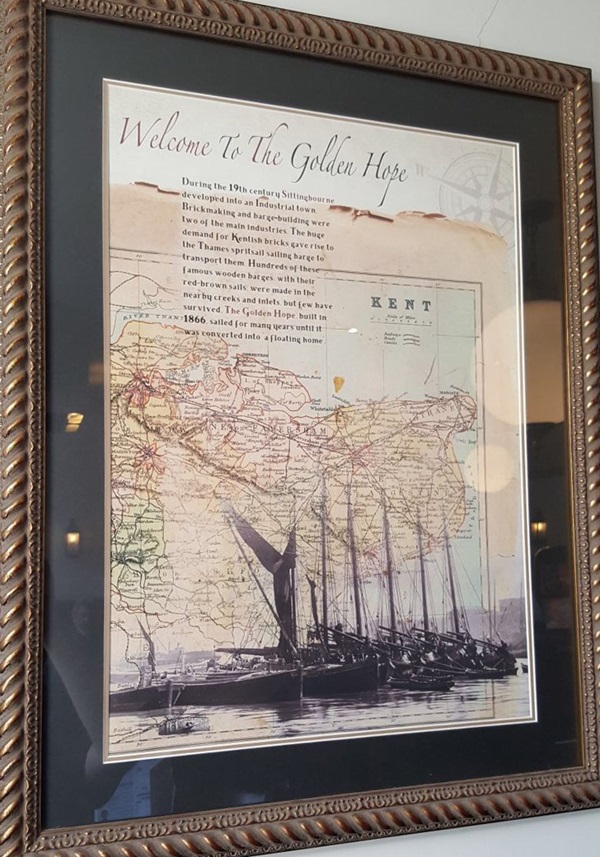
The text reads: During the 19th century Sittingbourne developed into an Industrial town. Brickmaking and bare-building were two of the main industries. The huge demand for Kentish bricks gave rise to the Thames spritsail sailing barge to transport them. Hundreds of these famous wooden barges with their red-brown sails were made in the nearby creeks and inlets but few have survived. The Golden Hope, built in 1866, sailed for many years until it was converted into a floating home.
A print and text about the magnetic compass.
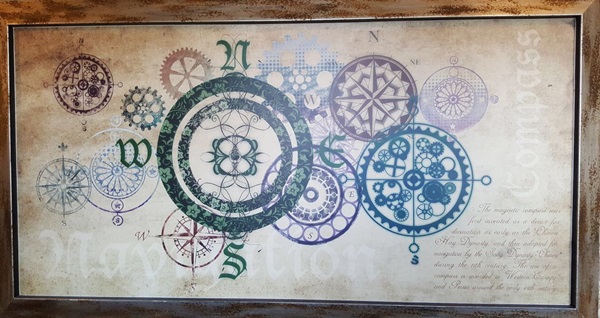
The text reads: The magnetic compass was first invented as a device for divination as early as the Chinese Hay Dynasty and then adopted for navigation by the Song Dynasty Chinese during the 11th century. The use of a compass is recorded in Western Europe and Persia around the early 13th century.
Text about the Sittingbourne Paper Mill.
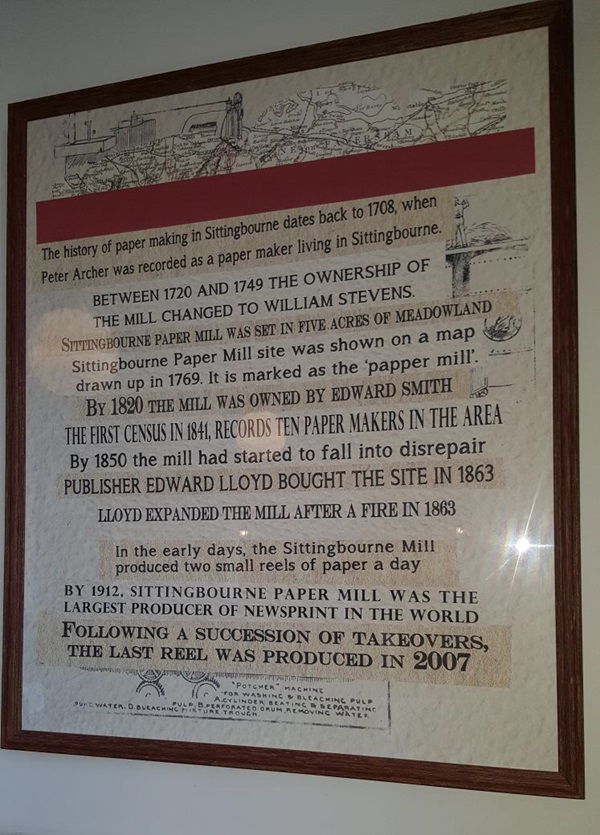
The text reads: The history of paper making in Sittingbourne dates back to 1708, when Peter Archer was recorded as a paper maker living in Sittingbourne.
Between 1720 and 1749 the ownership of the mill changed to William Stevens. Sittingbourne Paper Mill was set in five acres of meadowland. Sittingbourne Paper Mill site was shown on a map drawn up in 1769. It is marked as the ‘papper mill’. By 1820 the mill was owned by Edward Smith. The first census in 1841, records ten paper makers in the area. By 1850 the mill had started to fall into disrepair. Publisher Edward Lloyd bought the site in 1863. Lloyd expanded the mill after a fire in 1863. In the early days, the Sittingbourne Mill produced two small reels of paper a day. By 1912, Sittingbourne Paper Mill was the largest producer of newsprint in the world. Following a succession of takeovers, the last reel was produced in 2007.
Text about the art of brick making.
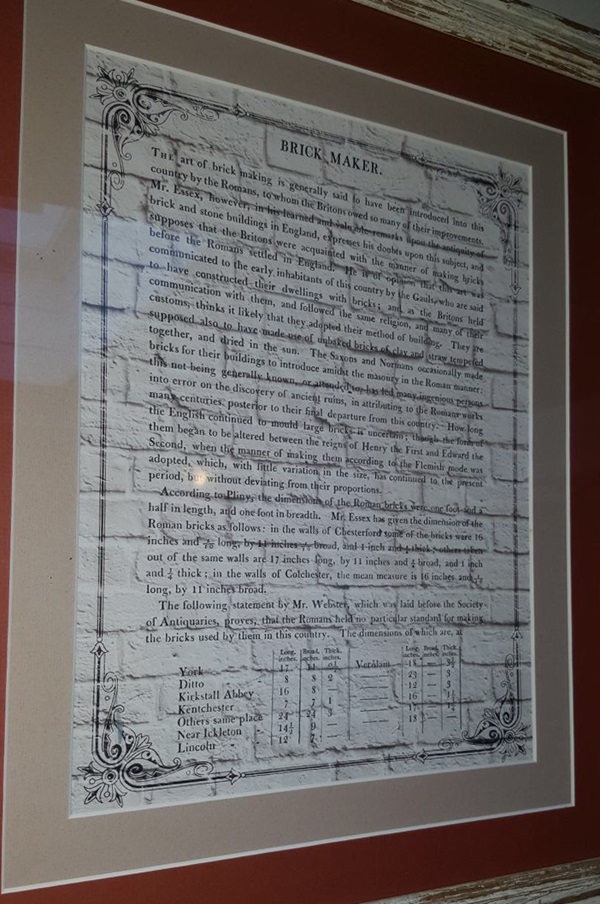
The text reads: The art of brick making is generally said to have been introduced into this country by the Romans, to whom the Britons owed so many of their improvements. Mr Essex, however, in his learned and valuable remarks upon the antiquity of brick and stone buildings in England, expresses his doubts upon this subject, and supposes that the Britons were acquainted with the manner of making bricks before the Romans settled in England. He is of opinion that this art was communicated to the early inhabitants of this country by the Gauls who are said to have constructed their dwellings with bricks; and as the Britons held communication with them, and followed the same religion, and many of their customs, thinks it likely that they adopted their method of building. They are supposed also to have made use of unbaked bricks of clay and straw tempered together, and dried in the sun. The Saxons and Normans occasionally made bricks for their buildings to introduce amidst the masonry in the Roman manner: this not being generally known or attended to has led many ingenious persons into error on the discovery of the ancient ruins, in attributing to the Roman works many centuries posterior to their final departure from this country. How long the English continued to mould large bricks is uncertain; though the forms of them began to be altered between the reigns of Henry the First and Edward the Second, when the manner of making them according to the Flemish mode was adopted, which, with little variation in the size, has continued to the present period, but without deviating from their proportions.
According to Pliny, the dimensions of the Roman bricks were one foot and a half in length, and one foot in breadth. Mr Essex has given the dimension of the Roman bricks as follows: in the walls of Chesterford some of the bricks were 16 inches and 1/10 long, by 11 inches 1/10 broad, and 1 inch thick; others taken out of the same walls are 17 inches long, by 11 inches and 1/4 thick; in the walls of Colchester, the mean measure is 16 inches and 1/10 long, by 11 inches broad.
The following statement by Mr Webster, which was laid before the Society of Antiquaries, proves that the Romans held no particular standard for making the bricks used by them in this country.
A print of High Street, Sittingbourne.
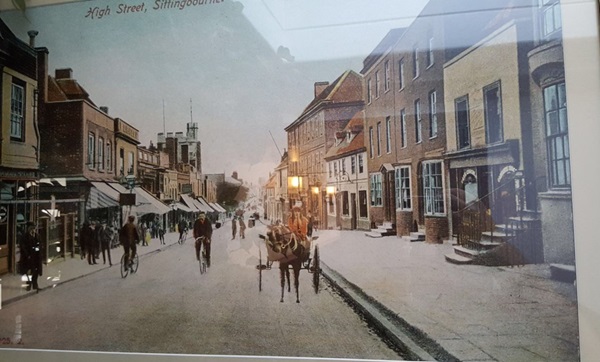
Illustrations and text about Thomas Beckett.
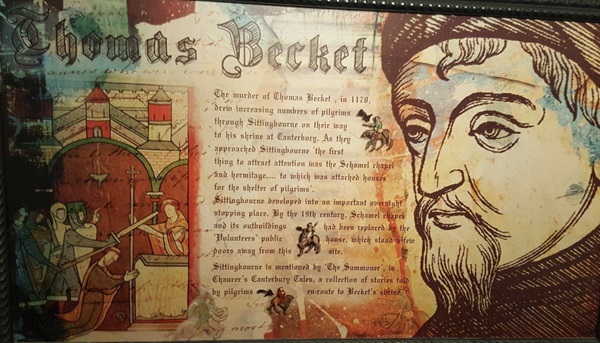
The text reads: The murder of Thomas Becket, in 1170, drew increasing numbers of pilgrims through Sittingbourne on their way to his shrine at Canterbury. As they approached Sittingbourne ‘the first thing to attract attention was the Scahmel chapel and hermitage… to which was attached houses for the shelter of pilgrims’.
Sittingbourne developed into an important overnight stopping place. By the 19th century, Schamel chapel and it’s outbuildings had been replaced by the ‘Volunteers’ public house, which stood a few hours away from this site.
Sittingbourne is mentioned by ‘The Summoner’, in Chaucer’s Canterbury Tales, a collection of stories told by pilgrims en-route to Becket’s shrine.
Text about Sittingbourne’s first Police Station.
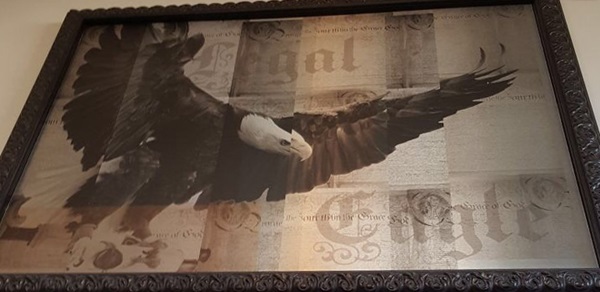
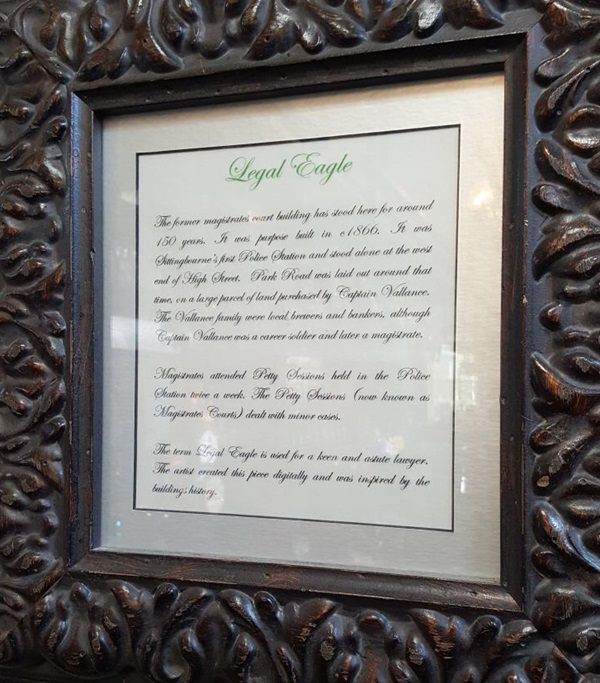
The text reads: The former magistrates court building has stood here for around 150 years. It was purpose built in c1866. It was Sittingbourne’s first Police Station and stood alone at the west end of High Street. Park Road was laid out around that time, on a large parcel of land purchased by Captain Vallance. The Vallance family were local brewers and bankers, although Captain Vallance was a career soldier and later a magistrate.
Magistrates attended Petty Sessions held in the Police Station twice a week. The Petty Sessions (now known as Magistrates Courts) dealt with minor cases.
The term Legal Eagle is used for a keen and astute lawyer. The artist created this piece digitally and was inspired by the buildings history.
Prints and text about Sittingbourne’s barge building.
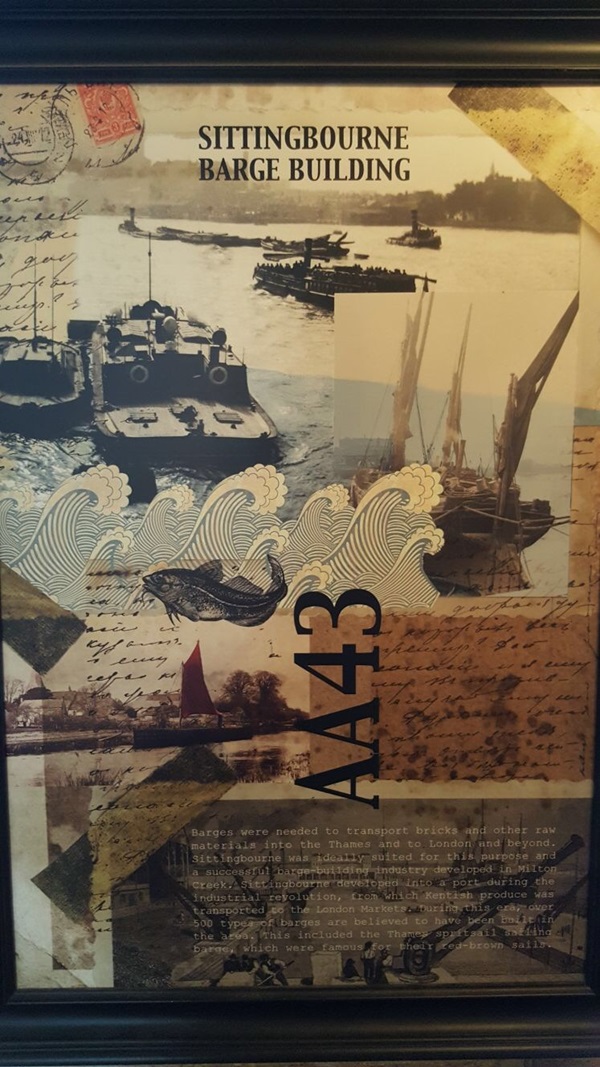
The text reads: Barges were needed to transport bricks and other raw materials into the Thames and to London and beyond, Sittingbourne was ideally suited for this purpose and a successful barge-building industry developed in Milton Creek. Sittingbourne developed into a port during the industrial revolution, from which Kentish produce was transported to the London Market. During this era, over 500 types of barges are believed to have been built in the area. This included the Thames spritsail sailing barge, which were famous for their red-brown sails.
Wall art representing the history of paper making.
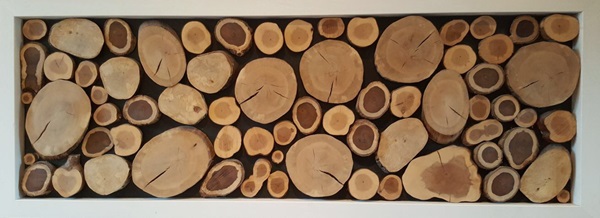
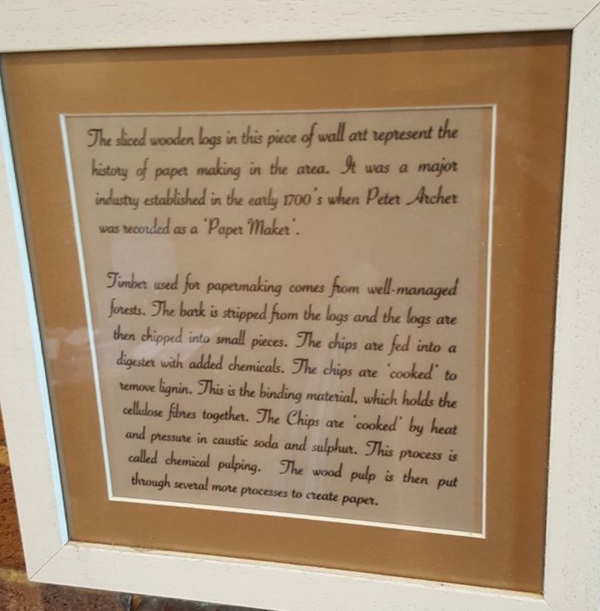
The text reads: The sliced wooden logs in this piece of wall art represent the history of paper making in the area. It was a major industry established in the early 1700s when Peter Archer was recorded as a ‘Paper Marker’.
Timber used for papermaking comes from well-managed forests. The bark is stripped from the logs and the logs are then chipped into small pieces. The chips are fed into a digester with added chemicals. The chips are ‘cooked’ to remove lignin. This is the binding material, which holds the cellulose fibres together. The chips are ‘cooked’ by heat and pressure in caustic soda and sulphur. This process is called chemical pulping. The wood pulp is then put through several more processes to create paper.
A sculpture of a spritsail.
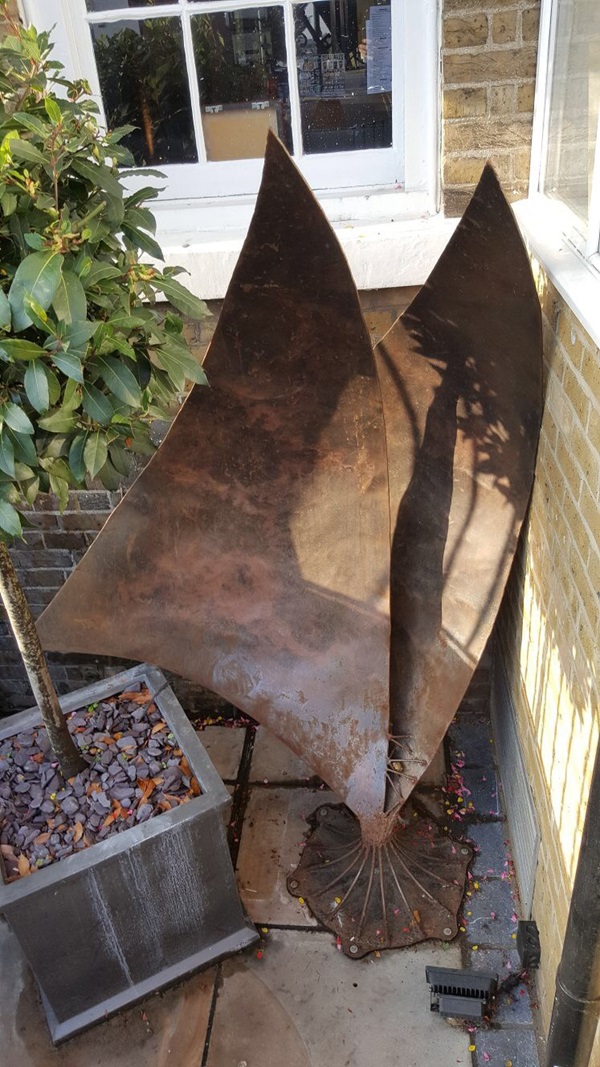
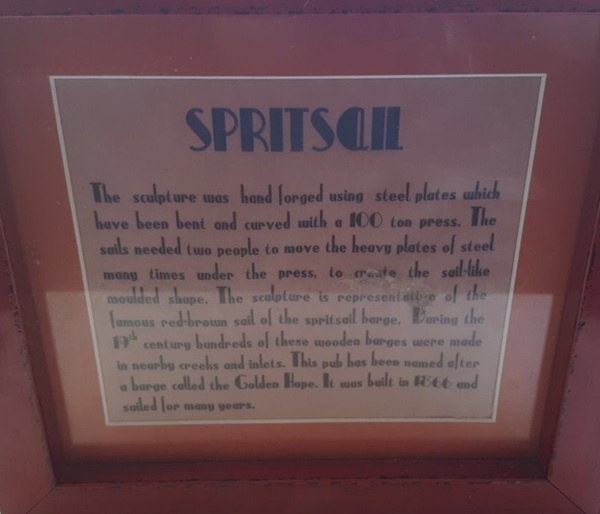
The text reads: The sculpture was hand forged using steel plates which have been bent and curved with a 100 ton pres. The sails needed two people to move the heavy plates of steel many times under the press, to create the sail-like moulded shape. The sculpture is representative of the famous red-brown sail of the spritsail barge. During the 19th century hundreds of these wooden barges were made in nearby creeks and inlets. This pub has been named after a barge called the Golden Hope. It was built in 1866 and sailed for many years.
Internal photographs of the pub.
The Golden Hope is a former police station, and has converted the cells into seating areas.
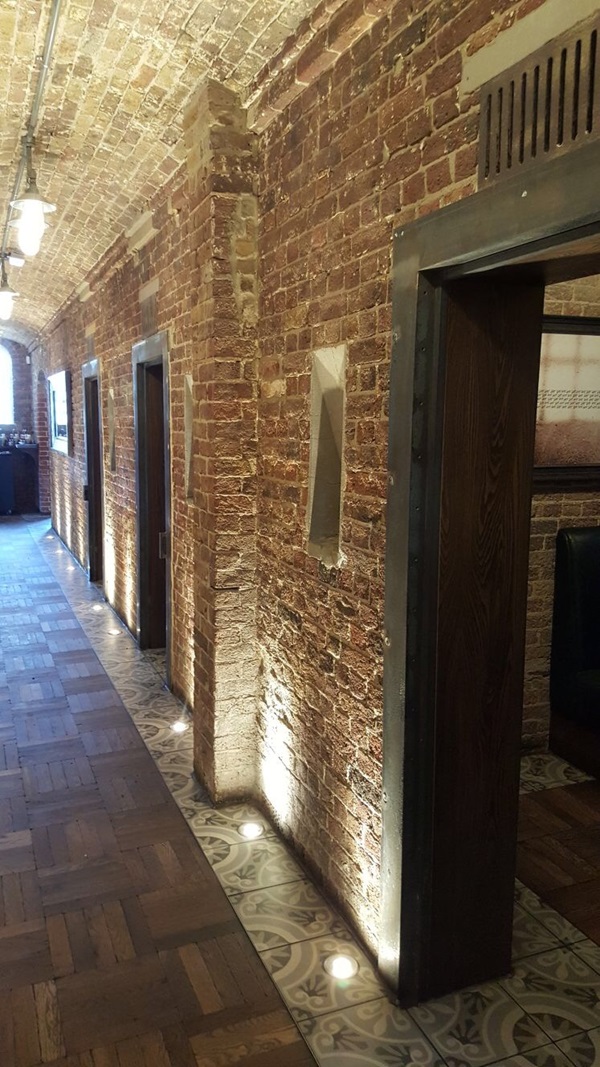
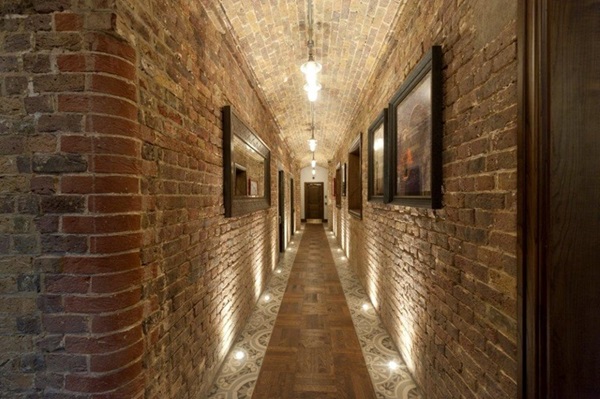
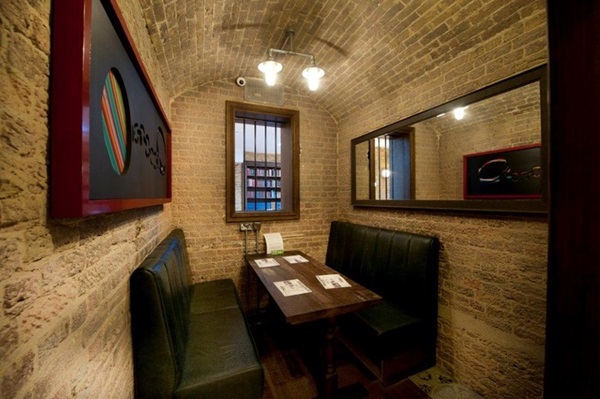
External photograph of the building – main entrance.
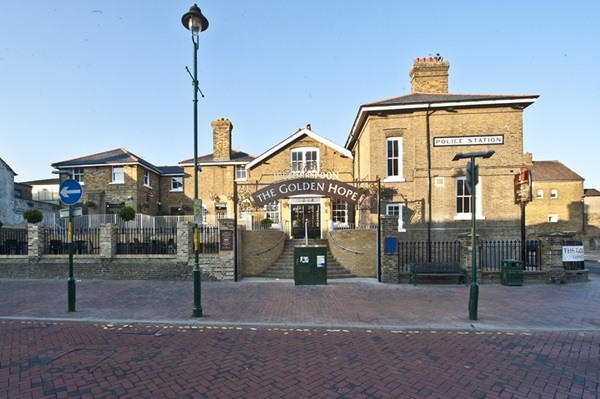
Extract from Wetherspoon News Spring 2017.
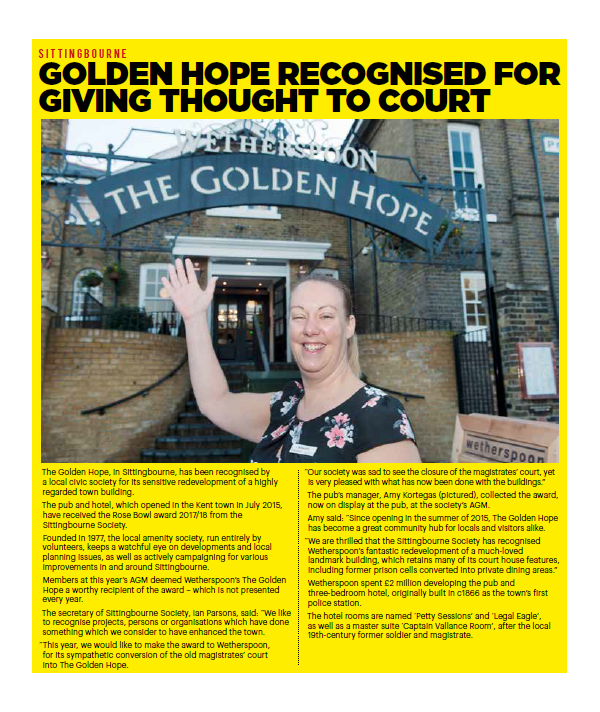
Extract from Wetherspoon News Summer 2018.
If you have information on the history of this pub, then we’d like you to share it with us. Please e-mail all information to: pubhistories@jdwetherspoon.co.uk